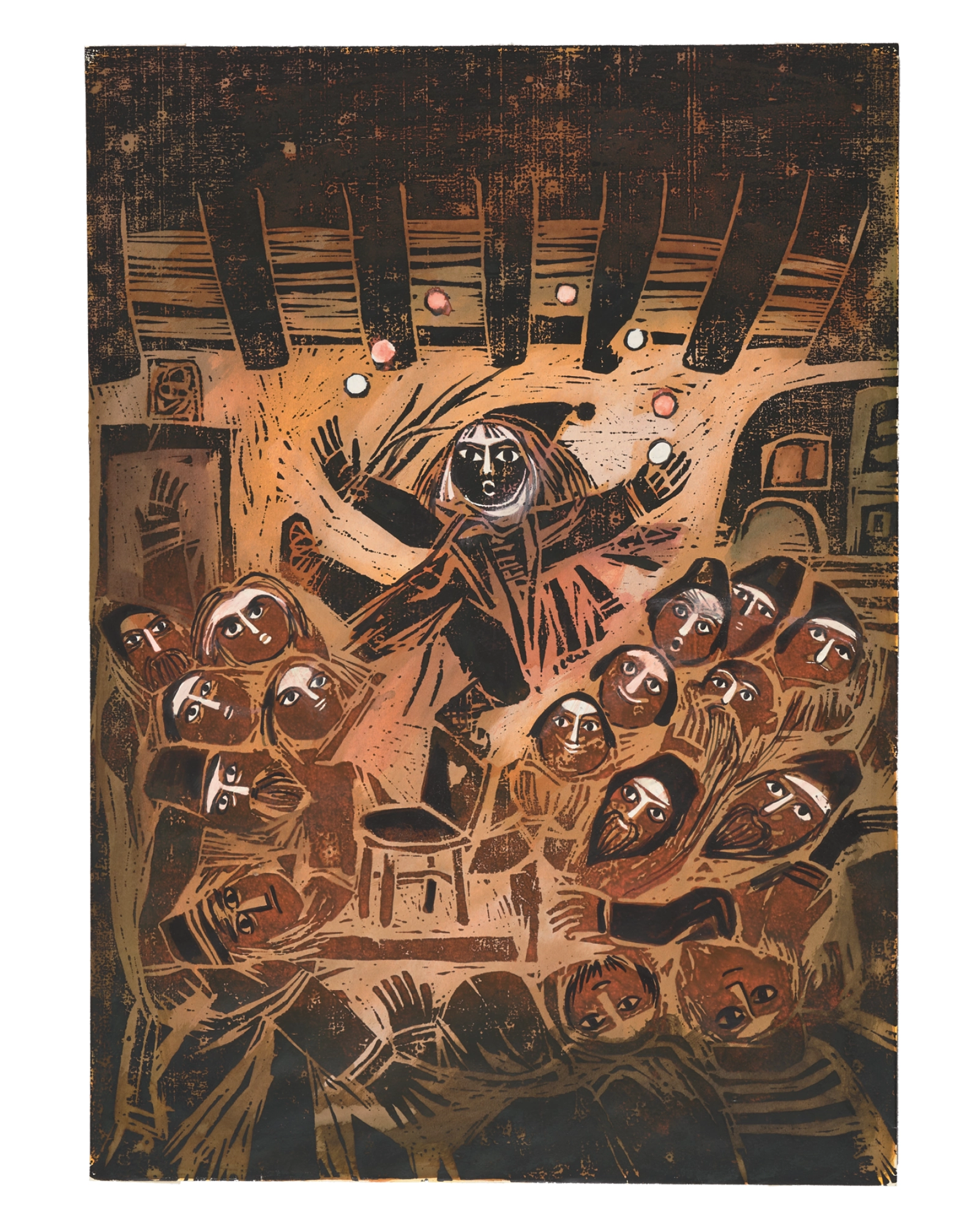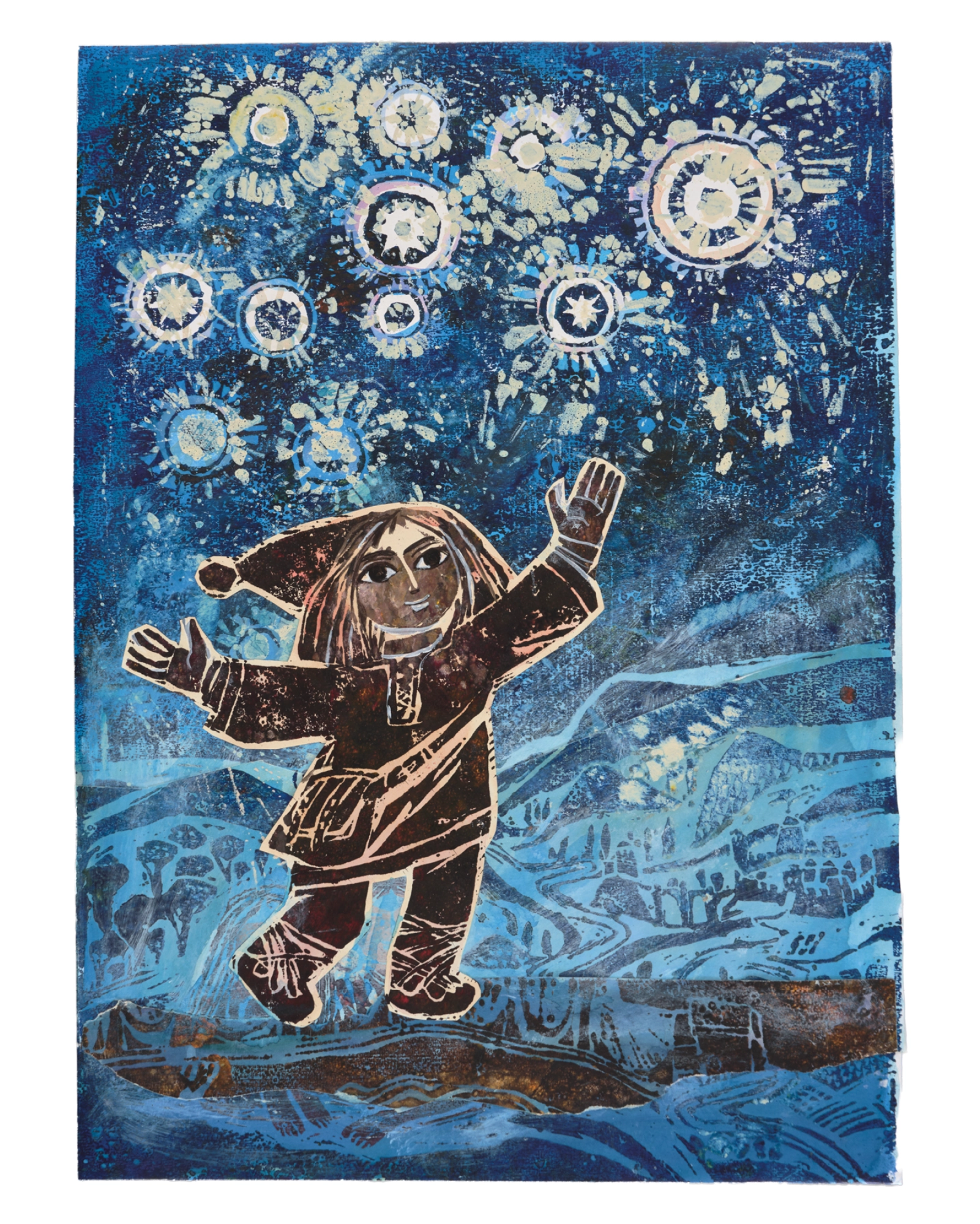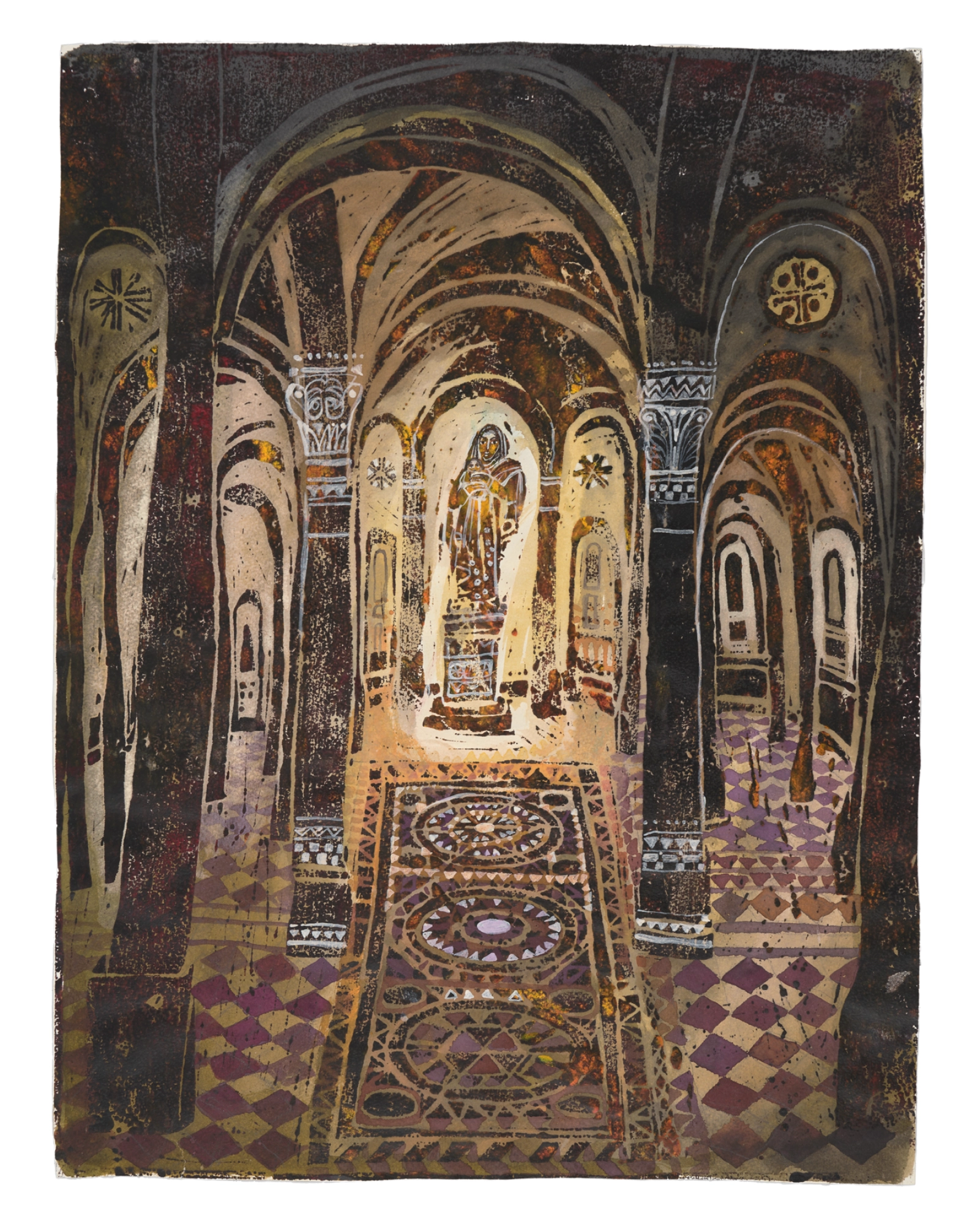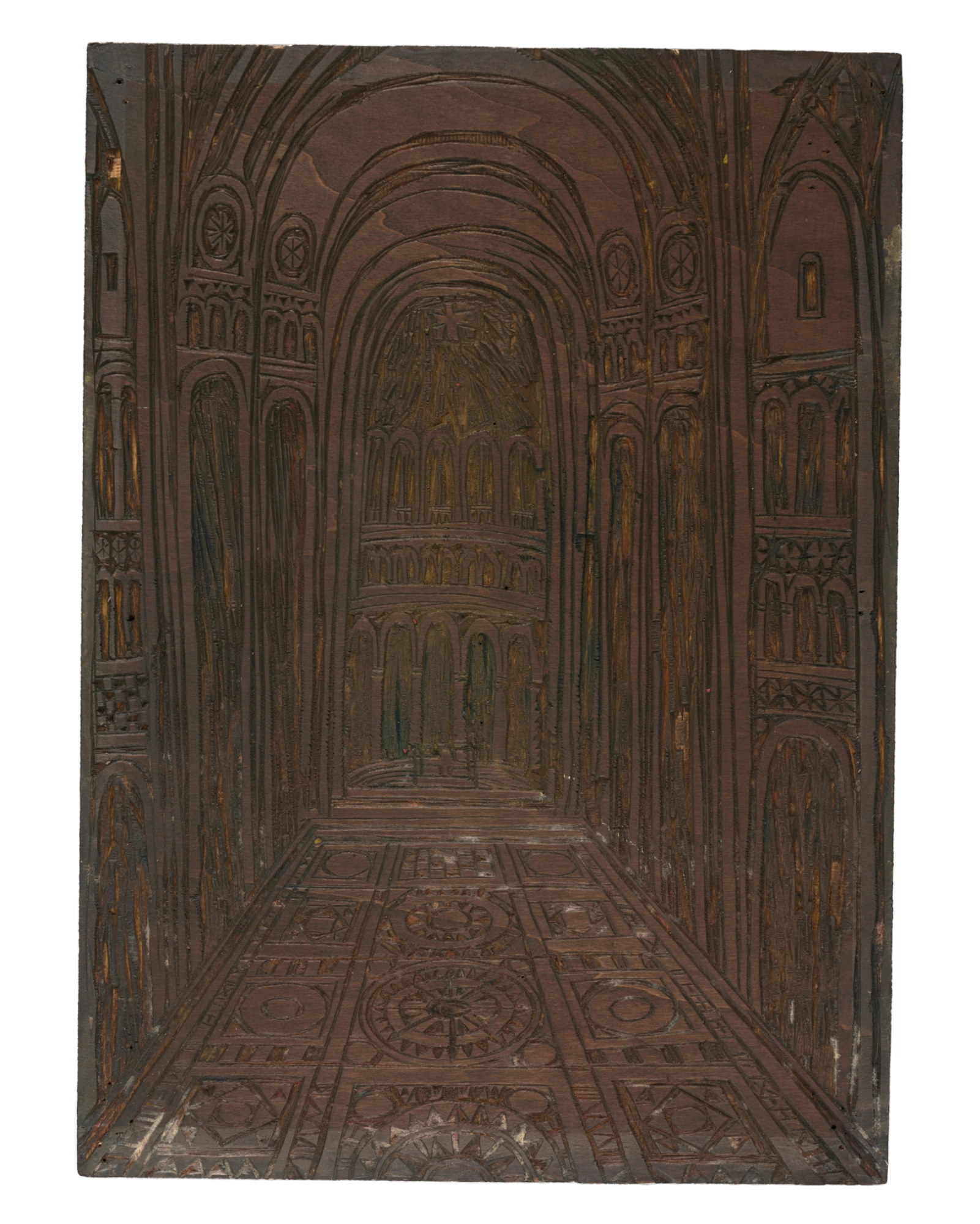Jacopo il giullare is a book from 1991 that, over thirty years later, still deserves to be rediscovered.
Max Bolliger draws upon an ancient medieval legend, blending elements from Anatole France’s Le jongleur de Notre-Dame and Jules Massenet’s musical work of the same name, transforming it into a children’s fairy tale. Štěpán Zavřel, who studies and selects the most suitable technique for each story, amplifies its magic with his masterful illustrations: watercolor woodcuts that glow with an ancient light, where Romanesque architecture stands out majestically, and the small figures exhibit sharp features resembling the angular lines of early 20th-century Expressionism.
Jacopo the Jester is the child who always brings joy, even convincing the most austere of adults, the abbot, to embrace the other, despite their differences, sweeping away prejudices and preconceptions so that hearts may fill with joy and all can live together happily in the world. To make this encounter happen, the Madonna intercedes—a maternal, allegorical, and mysterious figure—almost like a tarot card (just like Jacopo—jongleur in French, but also fou, the Fool)—teaching us that the “religiosity” of humanity is expressed in the simplest and most spontaneous actions, those of a childlike spirit that knows the art of loving everything without distinction.





